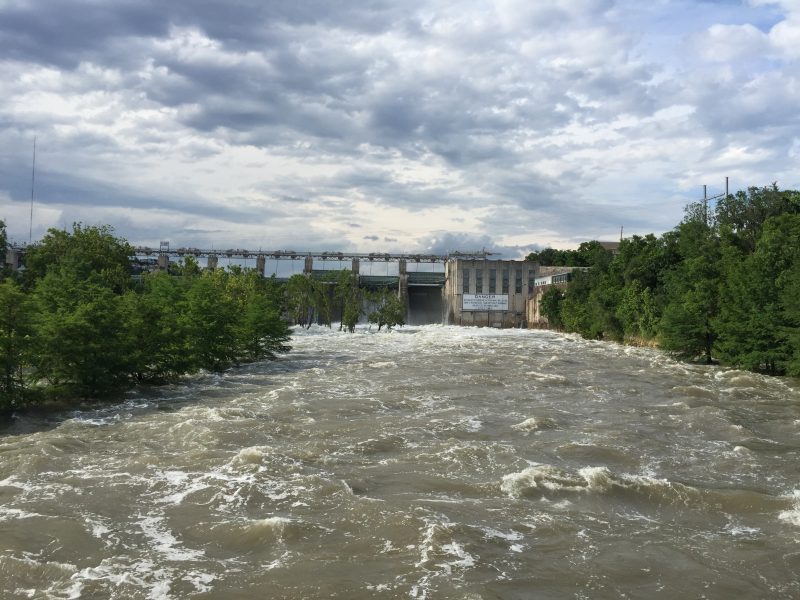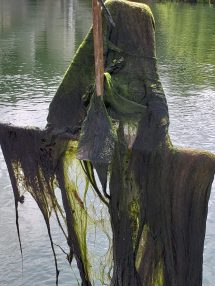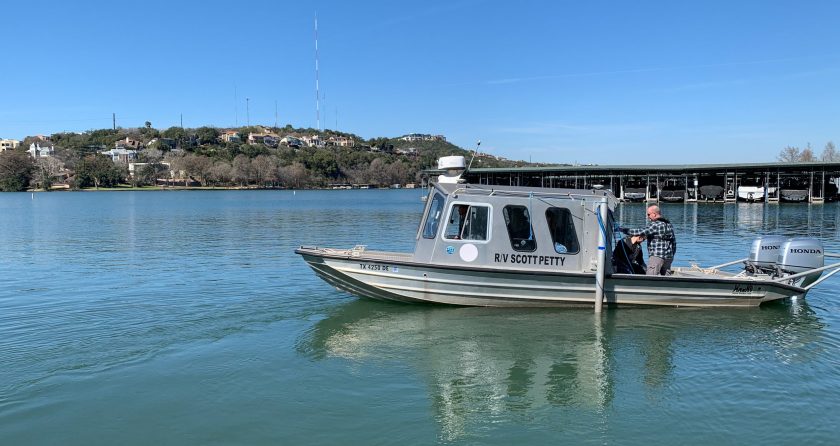Austin Partners with UT to give City Lakes a Health Checkup
September 7, 2021

The waters of Austin’s city lakes are enjoyed by millions each year, but years of urban development and weather extremes are taking their toll.
Now, scientists at The University of Texas at Austin and the City of Austin will give Lake Austin and Lady Bird Lake a first-of-its-kind health checkup when they embark on Sept. 8 to take lakebed CT scans and algae biopsies.
The checkup will investigate thickening algal mats linked to sediments washed in by severe flooding. It will support the City of Austin’s routine water quality and harmful algal sampling efforts.

Learning how the sediments and algae affect Austin’s waterways can help the city predict how related problems might progress in the future. For example, in 2018, historic flooding swamped the humanmade lakes and shut down water treatment plants. The following summer the lakes were hit by a rarely seen toxic algae outbreak.
The project is motivated by the need to preserve local water sources from droughts and floods, said project co-lead Marcy Davis, an engineering scientist at UT’s Institute for Geophysics (UTIG).
“We have to take care of our water,” she said.
The exploratory operation will happen in two stages, each lasting about a week; a late summer survey when warm temperatures and stagnant water mean algal growth is at its highest, and another in the winter when waters are cooler and the algae are expected to be dormant.
At Lake Austin, the scientists will deploy geophysical instruments aboard UTIG’s 26-foot aluminum-hulled research vessel, the R/V Scott Petty, to map the lakebed’s topography and dig samples from its sediments. The next day they’ll mount their instruments onto a smaller municipal boat to survey Lady Bird Lake, where green, non-toxic algae grow in thick mats.
The crew will include Engineering Scientist Dan Duncan and Graduate Research Assistant Naoma McCall from UTIG as well as the City of Austin’s Brent Bellinger, a senior environmental scientist with the Watershed Protection Department.
According to Bellinger, the benign algal mats feeding on lake floor sediments are a priority because as they grow thicker, they unbalance food chains and wash up on shorelines, creating a foul smell when they decompose and, on rare occasions, bacterial health risks.

The main culprits for the thickening algal mats are likely to be a combination of excess nutrients from river sediments and zebra mussels, an invasive species of mussels from Eurasia that filter the water. The nutrients put the algae into overdrive, while the filtered water means more sunlight reaches algae blanketing the bottom of the lake. The combined effect makes it much likelier the algae will bloom.
Water quality is further worsened by runoff pollution like pet waste, motor oil and garden chemicals. The city mitigates these problems through engineering projects, land preservation and management, and public awareness programs like Grow Green and Scoop the Poop that focus on how community members can make a positive difference.
The new project uses geophysical technologies they hope can guide the city’s actions and make them more effective.
“Every bit of data we can get to inform the overall health and condition of the reservoirs is essential to protecting them,” Bellinger said. “With this technology we should get a really nice look at the changing biogeochemistry.”
The project is supported by UTIG’s Blue Sky Initiative, a funding program for novel research ideas by the institute’s scientists and engineers. UTIG is a unit of UT’s Jackson School of Geosciences.
For more information, contact: Anton Caputo, Jackson School of Geosciences, 512-232-9623; Constantino Panagopulos, University of Texas Institute for Geophysics, 512-574-7376.
